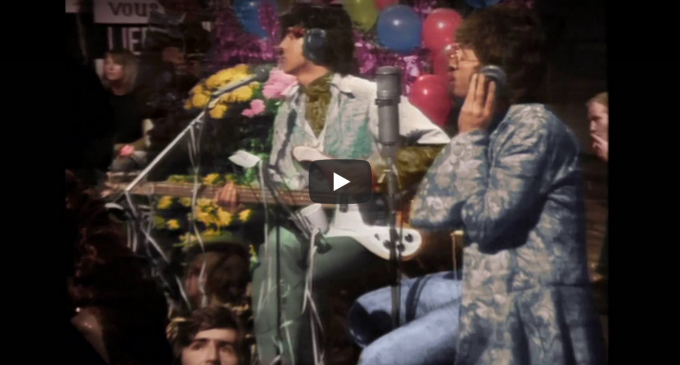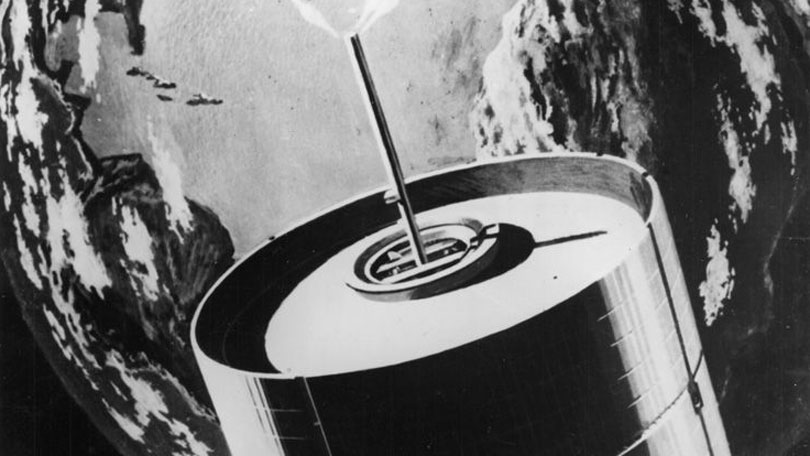Remembering the groundbreaking Intel-1 satellite that brought the world The Beatles | BT

You’ve heard news anchors introduce guests with the obligatory “joining us now via satellite,” for decades. That’s only possible because of the vast network of communications satellites currently in orbit around the earth.The Intelsat-1, nicknamed Early Bird, pioneered this new era of global communication via space when it launched on April 6 1965. It was the first commercial satellite to be placed in geosynchronous orbit, which means it follows the daily rotation of the earth, albeit on a different inclination.So, if you were observing the satellite from the ground it would appear to be in the same position. This is necessary to maintain continuous transmission, as the line of sight is never lost. Also due to the higher position in orbit, these satellites can cover and connect more of the earth.Early Bird took full advantage, becoming the first satellite to enable constant satellite communication between Europe and North America. Phone calls, faxes and television broadcasts were all transmitted by the dinky satellite, which weighed just 34.5kg and measured a mere 76 x 61 cm. It featured just two 6W transponders with 50 MHz bandwidth and was covered with 6,000 solar cells.After it was placed in service on June 28 of 1865 it was able to support the transmission of one television channel or 240 voice circuits at a time, but not both.It was built for Nasa by the Hughes Aircraft Company, which was founded by aviation pioneer Howard Hughes. Specifically, it was the Hughes Space and Communications Company, which operates today as the Boeing Satellite Development Center.The intent was to use Early Bird for 18 months, but it remained in service for nearly four years. Although deactivated it remains in orbit above the earth today, but it was brought out of retirement to celebrate the 25th anniversary in 1990.Alongside later satellites (Intelsat 2 over the Pacific, Intelsat 3 over the Atlantic and Nasa’s ATS-1) Early Bird was used to relay the landmark television broadcast Our World. Aired in June 1967, it was the very first live broadcast transmitted around the world via satellite. An estimated 400 million viewers in 25 countries tuned in – by far the largest audience for any television event up to that time.Nineteen nations were represented by artists and performers, including Spanish painter Pablo Picasso. However, the two-and-a-half hour special closed with The Beatles performing All You Need Is Love live from Abbey Road.This marked the first time the song was played publically, as it was written especially for the event by John Lennon. The BBC, which had masterminded the Our World broadcast, had asked The Beatles to submit something viewers around the world could easily understand and the result was one of the most beloved pop songs in history.During its time in service Intelsat-1 broadcast also provided live TV coverage of the Gemini 6 splashdown in December 1965. It was also reactivated and used during the Apollo 11 mission in June 1969 following the failure of another Atlantic satellite.Further satellite launches in the late 1960s and early 1970s dramatically increased power and potential, as well as covering more of the planet. 1967’s Intelsat-3 provided support for 1,500 voice circuits or four TV channels. 1971’s Intelsat-4 enabled 4,000 voice circuits.These innovations enabled all of the world’s television networks to be connected to each other at all times and pioneered the global television coverage we enjoy today.Picture credit: BT Archives
Source: Remembering the groundbreaking Intel-1 satellite that brought the world The Beatles | BT




There are no comments at the moment, do you want to add one?
Write a comment